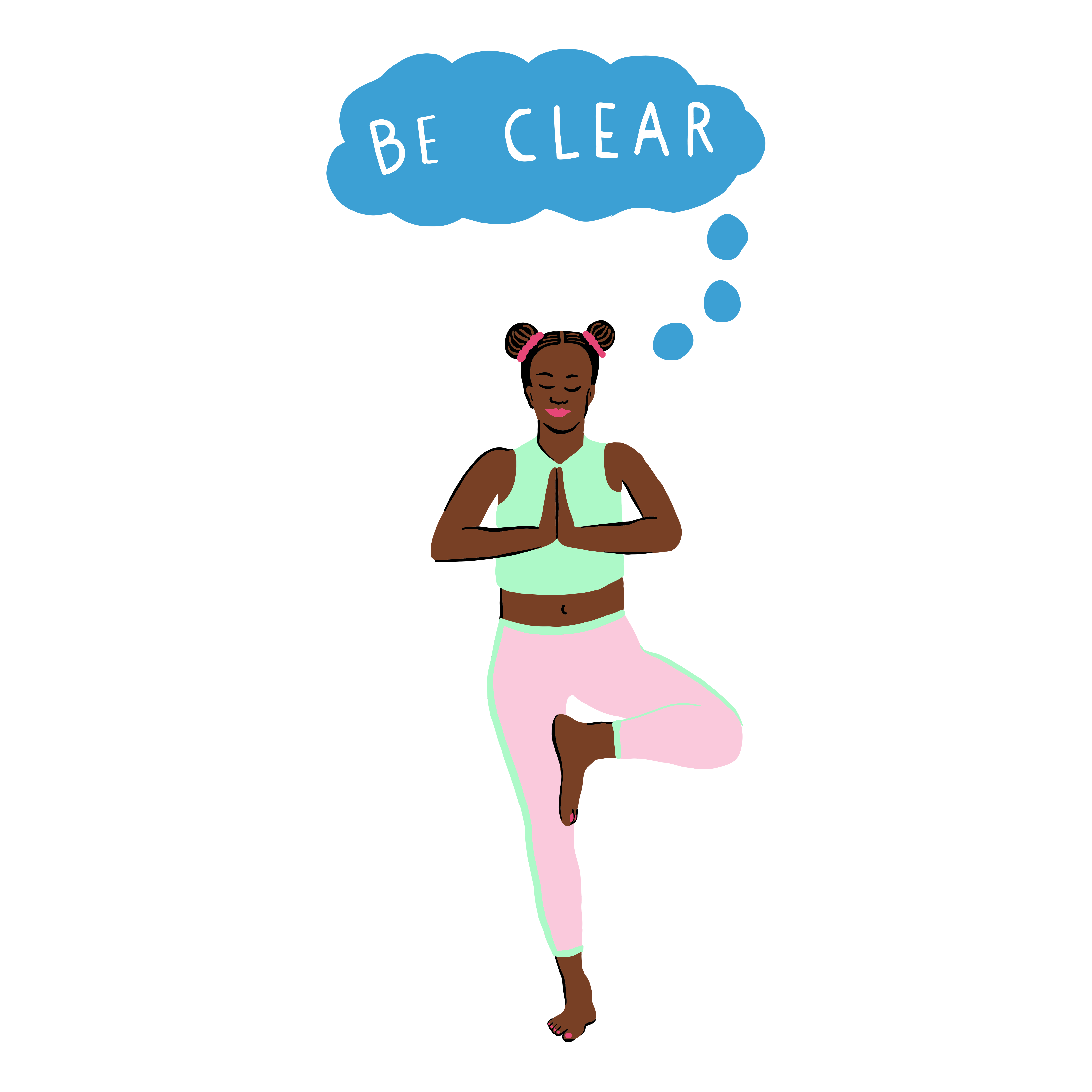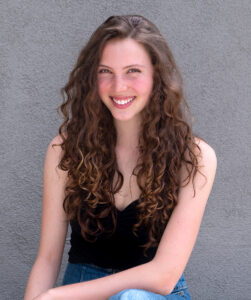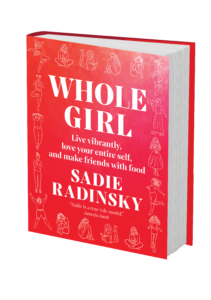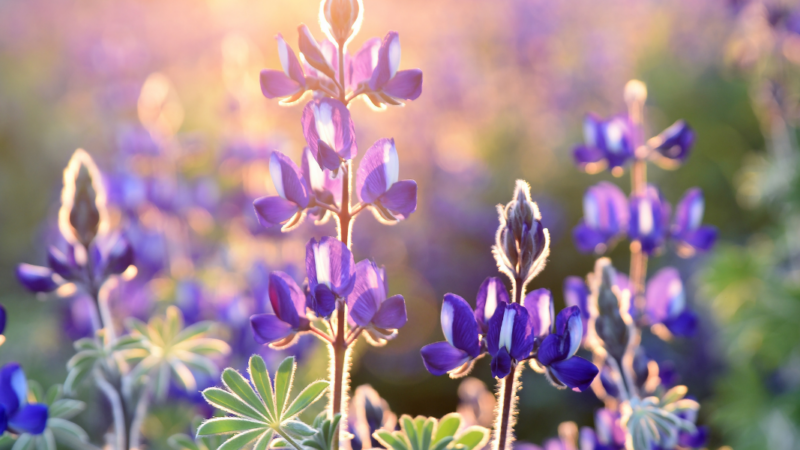The Way of the Feminine to Save the World
You feel special. Sometimes this feels like a curse. Like no one will understand you. Ever. Like you will always be an alien walking among regular humans, pretending to blend in. You have learned to live with this gulf, but what you really crave is community. You long to belong to the human family. To Mother Earth.
Participating in the human condition can be bewildering. It is just not always cozy and easy—rather, it’s humbling at best, downright humiliating when it is not flowing. It can seem so much simpler to ride solo, slaying your own dragons and singing the ballads you wrote about yourself. Collaboration can be tedious, and the prevailing masculine value system may have conditioned you to feel like you are giving away your power when you share it with others.
So what? Give it away. The time of the singular sage bestowing his unique wisdom is over. That was a method devised by the men in charge who sought to regulate wisdom. They taught us to suffer alone in the desert for forty years, collecting our insights in a secret box called “Esoteric Knowledge.” Then, we were supposed to dispense those insights stingily to those who proved themselves worthy by also suffering alone for the requisite forty years in the desert.
It turns out that the world is filled with special beings, grappling our way through the anxiety of solitary conundrums and tasting the occasional reprieve of connection. When you realize this, your body lets out its breath and relaxes. The curse lifts. You come in from the cold. You hold out your cup, and some other special being fills it with sweet, milky tea spiced with fragrant herbs. You drink.
Our way, the way of the feminine, is to find out what everyone is good at and praise them for it and get them to teach it to one another. Maybe you know something about the hidden meaning of the Hebrew letters, or how to build a sustainable home from recycled tires and rammed soil, or loving-kindness meditation. You, the one who knows the Islamic call to prayer, climb this minaret and call us all to prayer. You, the one who knows how to sit quietly at the bedside of the dying, show us the way to bear witness. You, the one who knows how to get us to wake up to the shadow of privilege, please wake us the #*#@ up. It will be chaotic, all this community building, but your cooperation will save the world.
Besides, it will be fun.
Setting Intentions to Clear the Mind
Clear Your Mind
Do you ever feel like your brain might burst? Right this minute, my mind is simultaneously processing way too many thoughts:
Need to walk the dogs.
Text my friend back.
Tomorrow’s physics final.
College applications.
Need to make lunch.
What time do I have to wake up tomorrow?
It seems as though my mind is always on overload. But I’m not actually getting anything done. Why is this?
It’s because our brains aren’t meant to hold this much information. Science shows that we can only store a maximum of three or four things at once in our conscious mind, also known as our “working memory.” When we hold on to more than this, our brains become like messy rooms—cluttered and full of junk, so we can’t find anything. No wonder I feel so overwhelmed and disorganized.

I Intend
Another way we can be clear is by setting intentions each morning. Intentions are state- ments for how we would like to go about our day. Unlike a goal, an intention doesn’t require any steps to reach a certain objective. It’s simply a way to be.
Intentions work like magic. They affect our behavior, how our day goes, and even what things “happen” to us. Here’s how to get started:
- Make your intentions at a set time each day, such as right after waking up. Take a deep breath. Notice how you feel. Do you have pain anywhere in your body? What is the first thought that pops into your mind? Is your brain racing with stress or worry? Pay attention to all of it.
- Ask yourself, What do I want to bring into this day? Breathe and listen to your body’s answer.
- Roll over, grab a pen and notebook, and write down three intentions for the day. Be sure to state them all in the affirmative. (For example, “I will practice forgiveness” rather than “I will not hold a grudge.”) Here is a sample:
I will be patient with myself.
I will listen intently to others.
I will speak out of kindness.
- Read over your list. Let your intentions seep in. It might help to read them out loud. When you feel satisfied, seal the practice with another deep breath. Throughout your day, whenever you feel yourself becoming overwhelmed or stressed, think back to those statements.
This is an excerpt from the chapter “Be Clear” from Whole Girl: Live Vibrantly, Love Your Entire Self, and Make Friends with Food by Sadie Radinsky.
 Sadie Radinsky is a 19-year-old blogger and recipe creator. For over six years, she has touched the lives of girls and women worldwide with her award-winning website, wholegirl.com, where she shares paleo treat recipes and advice for living an empowered life. She has published articles and recipes in national magazines and other platforms, including Paleo, Shape, Justine, mindbodygreen, and The Primal Kitchen Cookbook. She lives in the mountains of Los Angeles. For more, visit wholegirl.com.
Sadie Radinsky is a 19-year-old blogger and recipe creator. For over six years, she has touched the lives of girls and women worldwide with her award-winning website, wholegirl.com, where she shares paleo treat recipes and advice for living an empowered life. She has published articles and recipes in national magazines and other platforms, including Paleo, Shape, Justine, mindbodygreen, and The Primal Kitchen Cookbook. She lives in the mountains of Los Angeles. For more, visit wholegirl.com.
 Sounds True | Amazon | Barnes & Noble | Bookshop | Indiebound
Sounds True | Amazon | Barnes & Noble | Bookshop | Indiebound
The Basics of Natural Awareness 101: Relaxing Effort

There are three deliberate mental shifts you can make during classical mindfulness meditation that can help point you toward natural awareness: relaxing effort, broadening attention, and dropping objects.
Relaxing Effort
Using effort in classical mindfulness meditation typically means working to bring our attention back to whatever is the present-moment experience. We rigorously and faithfully return our attention to our main focus, typically our breathing. The moment we notice we’ve gotten lost in thought, we deliberately redirect our attention back to our breathing. It can be very hard work. I’ve seen meditators covered in sweat, straining to be aware.
This type of overexertion in meditation is too extreme. In classical mindfulness meditation, we need to be balanced between effort that leads to clear seeing and too much effort that doesn’t really serve us. Some meditators experience a lot of self-judgment, believing that they’re not trying hard enough.
Classical mindfulness meditators typically report that focusing gets easier over time. They can stay aware of their breathing for extended periods, or they find that they return their attention to their breath more quickly when it wanders away. Some people call this ease effortless effort—an experience in our meditation practice where we are making an effort, but it doesn’t seem hard to do at all.
Relaxing effort to shift into natural awareness is a little different. It means that we rein in the tendency to try to put our attention on our breath or other objects, and instead we just be with the objects as they arise.
I think a common concern of many meditators is that if they stop trying, then nothing will happen. Meditators also worry that their mind will wander all over the place if they are not making any effort to do something with it. Well, just sitting down and not doing anything wouldn’t be natural awareness practice; it would be sitting down and doing nothing. So that’s not what we’re trying to do here. Dropping or relaxing effort is very different in that we are tuning in to the awareness that is already present, without trying hard to get there. We also don’t necessarily have a wandering mind because we relax effort on the heels of having worked hard to pay attention.
Think of shifting into natural awareness like riding a bicycle. Often we pedal really hard, but at a certain point, we stop pedaling and begin coasting. The bike stays upright, and we continue to head wherever we’re going, but we’re not working so hard. In fact, it’s usually quite exhilarating to coast on a bicycle. The coasting is dependent upon the earlier pedaling stage, just like effortlessness in meditation is dependent upon the effort you made earlier—particularly the effort to concentrate your mind.
So what does relaxing effort feel like in meditation? It feels like stopping the attempt to wrestle with your unruly mind, to bring it effortfully back to the present, and instead resting, relaxing, and exploring the awareness that is already present. It often feels like things are just happening on their own, and we’re witnessing them. It can feel immensely relaxing and joyful to stop the struggle. We may lose the effortlessness, and then it takes a bit of effort to return to it (such as deliberately returning our attention to our breath for a few moments—or, to return to our bicycle analogy, pedaling for a block or two), but for the most part we are coasting, not pedaling. This relaxing of effort is one way to access a natural awareness.
Try it now:
Relaxing Effort Practice
Start your meditation session by closing your eyes, if you wish, and taking about ten minutes to develop focus and calm by rigorously paying attention to your breathing. When your attention wanders, bring it back to your breathing with regularity and precision.
After ten minutes, see if you can simply pause the effort you are making. Relax a bit (and that may include relaxing your body), and notice what is happening without you trying to be aware. Is awareness present? Are you naturally aware of what is happening in your body or mind, without deliberately placing your attention on the object? Can you sense the way awareness is happening, kind of on its own, and how you are present without having to work at it?
If you notice yourself getting lost in thoughts, then make an effort to come back to your breath for a while. But then stop making an effort again and see what happens.
Continue reading the next steps, Broadening Attention and Dropping Objects.
This is excerpted from The Little Book of Being: Practices and Guidance for Uncovering Your Natural Awareness by Diana Winston.

Diana Winston is the director of Mindfulness Education at UCLA Semel Institute’s Mindful Awareness Research Center (MARC) and the coauthor, with Dr. Susan
Smalley, of Fully Present: The Science, Art, and Practice of Mindfulness. She is a well‑known teacher and speaker who brings mindful awareness practices to the general public to promote health and well‑being. Called by the LA Times “one of the nation’s best‑known teachers of mindfulness,” she has taught mindfulness since 1993 in a variety of settings, including hospitals, universities, corporations, nonprofits, schools in the US and Asia, and online. She developed the evidence‑based Mindful Awareness Practices (MAPS) curriculum and the Training in Mindfulness Facilitation, which trains mindfulness teachers worldwide.
Her work has been mentioned or she has been quoted in the New York Times; O, The Oprah Magazine; Newsweek; the Los Angeles Times; Allure; Women’s Health; and in a variety of magazines, books, and journals. She is also the author of Wide Awake: A Buddhist Guide for Teens, the audio program Mindful Meditations, and has published numerous articles on mindfulness. Diana is a member of the Teacher’s Council at Spirit Rock Meditation Center in Northern California. She has been practicing mindfulness meditation since 1989, including a year as a Buddhist nun in Burma. Currently, Diana’s most challenging and rewarding practice involves trying to mindfully parent an eight‑year‑old. She lives in Los Angeles.
For more information, visit dianawinston.com and marc.ucla.edu.
Buy your copy of The Little Book of Being at your favorite bookseller!
Sounds True | Amazon | Barnes & Noble | Indiebound

The Future is a Thought, with Eckhart Tolle
One of the great gifts a spiritual teacher can offer is to shine a new light upon beliefs we take for granted. In this short video teaching, excerpted from Creating a New Earth: The Best of Eckhart Tolle TV Season 1, Eckhart Tolle examines our idea of the future. We spend a lot of time thinking about it, planning for it, and worrying about it . . . yet is the future really what we believe it is?
With plain-spoken wisdom and gentle humor, Eckhart offers the seed of a deeply radical idea—one that could transform the way we relate to the future, the past, and the present moment.
The Gifts of Imperfect Parenting – with Brené Brown
We all know that perfect parenting does not exist, yet we still struggle with the social expectations that teach us that being imperfect is synonymous with being inadequate. These messages are powerful and we end up spending precious time and energy managing perception and the carefully edited versions of the families we show to the world.
On The Gifts of Imperfect Parenting: Raising Children with Courage, Compassion, and Connection, Dr. Brené Brown invites us on a journey to transform the lives of parents and children alike. Drawing on her 12 years of research on vulnerability, courage, worthiness, and shame, she presents 10 guideposts to creating what she describes as “wholehearted” families where each of us can continually learn and grow as we reach our full potential.
Here in this body are the sacred rivers…
The commitment to our immediate embodied experience is the most radical commitment we could ever make. To commit to this life – right here, right now, as it is – is the unbearable and direct path into the love and freedom that we all so long for. When sadness comes calling, grief appears, shame arrives, anxiety comes for tea, do not mistake them for ordinary visitors, for they have been sent from beyond. Inside every feeling, each sensation, and every flow of emotion is a secret doorway into the center of the heart. Let us allow these guests to reveal to us their gifts, turning toward them, for they have come to show us the way home.
In the words of the great tantric sage Saraha, “Here in this body are the sacred rivers: here are the sun and moon as well as all the pilgrimage places… I have not encountered another temple as blissful as my own body.” Whatever we are offered in this day – the beautiful, the challenging, the heartbreaking, the painful, the difficult – let us allow this life to touch us in the most unprotected way. Let us somehow be willing to risk everything for this one and only rare experience, allowing each and every person we meet to matter deeply.

Let us make this pilgrimage into and through the cells of our heart, learning its secrets; and through the strands of our DNA, sailing down the sacred rivers which make up this precious human body. And, finally, let us behold the movement of love as it washes through every organ, reorganizing our entire somatic sensual reality into a vessel of kindness and attuned empathic presence, filled with a profound care for this life and for all beings everywhere.




